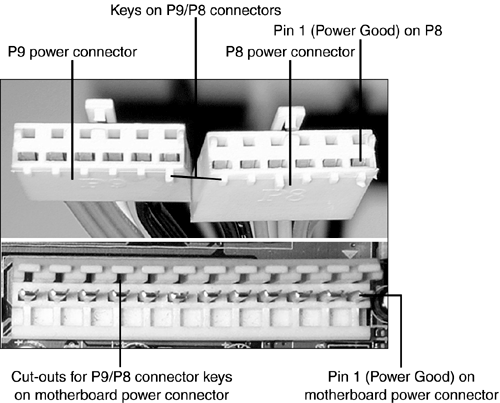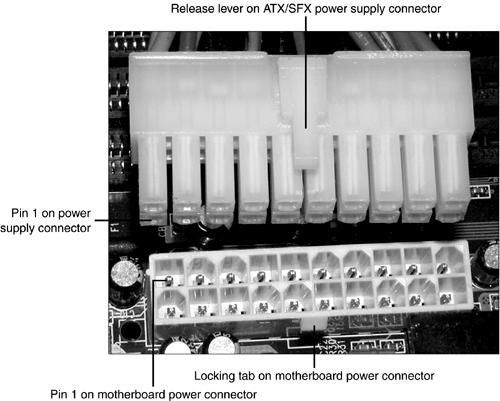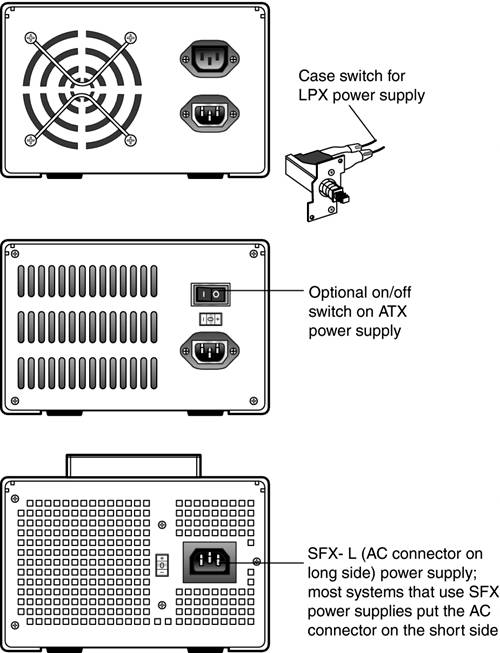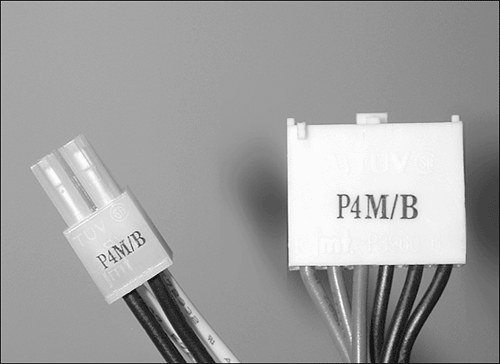Replacement Power Supply Form Factors and Connectors
| < Day Day Up > |
| When you shop for a power supply, you also need to make sure it can connect to your motherboard. There are two major types of power connectors on motherboards:
caution
Figure 5.7 lists the pinouts for these connectors. Note that only 5V and 12V DC power levels are supported by 12-pin (LPX) power supplies, whereas ATX power supplies also support 3.3V DC power levels. Most systems that still use the 12-pin power supply connector use a type of power supply referred to as Slimline , LPX, or PS/2. Slimline power supplies have a power switch that connects directly to the power switch on the front of the case. Systems that use the 20-pin power supply with a full- size ATX motherboard (refer to Chapter 4, "The Motherboard and CPU") use ATX power supplies. However, systems that use the smaller Micro-ATX and Flex-ATX motherboards typically use an SFX (small form factor) power supply. SFX power supplies might have internal or external cooling fans, and can have the AC power connector on the short side (most versions) or the long side (used by some eMachine and HP computers that use micro-tower cases). ATX and SFX power supplies do not use a cable-mounted power switch, although some ATX power supplies have a built-in on-off switch. Figure 5.8 shows how these power supplies compare physically to each other. Figure 5.8. Rear view of typical LPX (top), ATX (middle), and SFX-L (bottom) power supplies. If your wattage calculations or your tests (covered later in this chapter) agree that it's time to replace the power supply, make sure the replacement will
caution
To ensure reliability, a power supply should have a UL (Underwriters Laboratory) or CE (European) rating; these are the leading international standards associations for powered devices. Many very low-cost power supplies lack either rating and can produce erratic voltage levels and might represent a significant high-voltage hazard . It's also desirable to select a power supply that has enough Molex (large four-wire) and floppy drive (small four-wire) connectors to support the drives and case fans you plan to use in the system (see Figure 5.10). If your power supply doesn't have enough connectors, you can add Y-splitters to divide one power lead into two, but these can short out and can also reduce your power supply's efficiency. Figure 5.10. Molex (left) and small (right) drive power connectors. |
| < Day Day Up > |
EAN: N/A
Pages: 310




